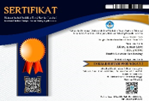PERBANDINGAN BEBERAPA METODE PEMBUATAN METIL ESTER DALAM ANALISA ASAM LEMAK DARI VIRGIN COCONUT OIL (VCO)
DOI:
https://doi.org/10.35799/jis.11.2.2011.214Abstract
PERBANDINGAN BEBERAPA METODE PEMBUATAN METIL ESTER DALAM ANALISA ASAM LEMAK DARI VIRGIN COCONUT OIL (VCO)
Julius Pontoh1) dan Lita Makasoe1)
1)Program Studi Kimia FMIPA Universitas Sam Ratulangi, Manado 95115; e-mail: pontohjulius@yahoo.com
ABSTRAK
Transesterifikasi merupakan metode awal dalam analisa asam asam lemak dalan minyak dengan teknik kromatografi gas. Tujuan dari penelitian ini adalah untuk mempelajari efisiensi diantara berbagai metode transesterifikasi dalam analisa asam asam lemak dalam minyak kelapa murni. Metode yang dipelajari meliputi transesterifikasi asam dan basa menurut Christie (1993), transesterifikasi asam dan basa menurut Laureles, at al. (2002) dan trasesterifikasi menurut IUPAC (1997). Hasil penelitian menunjukan bahwa diantara metode yang dipelajari hanya memberikan sedikit perbedaan waktu retensi dari asam asam lemak dengan berbagai erlakuan metode transesterifikasi. Metode IUPAC (1997) memberikan luas puncak yang lebih besar dari anatara metode yang dipelajari. Transesterifikasi basa dengan metode Christie (1992) memberikan persentasi luas area tertinggi untuk asam laurat, diikuti dengan transesterifikasi asam dengan metode Laureles, et al., 2002), tetapi untuk persentasi luas puncak dari asam kaprilat dan kaprat metode IUPAC (1997) menghasilkan persentasi luas luncak yang lebih besar. Dengan demikian, untuk analisa asam asam lemak dalam VCO, metode IUPAC (1997) adalah yang terbaik.
Kata kunci: metil ester, VCO
COMPARISON OF SOME METHODS IN MAKING METHYL ESTER OF FATTY ACID ANALYSIS FROM VIRGIN COCONUT OIL (VCO)
ABSTRACT
Transeterification is always the first step in analysis of fatty acid using gas chromatographic method. The goal of this research is to study the efisiency of the derivative methods for fatty acid analysis. The methods to be studied including acid and base transesterification (Christie, 1993), acid and base transesterification (Laureles, et al., 2002) and esterification (IUPAC, 1997). The results show that among the methods there are only slightly different in retention time.  The IUPAC (1997) method showed higher peak area among the methods tested.  The base transeterification by Christie (1993) produce the highest percentage peak area for the lauric acid followed by acid tranesterification by Laureles, et al. (2002). But for caprylic and capric acids, the esterification by IUPAC (1997) produce higher percentage of peak areas. Therefore, for the purpose of VCO’s fatty acid analysis, the IUPAC method should be the choice.
Keywords: methyl ester, VCO





